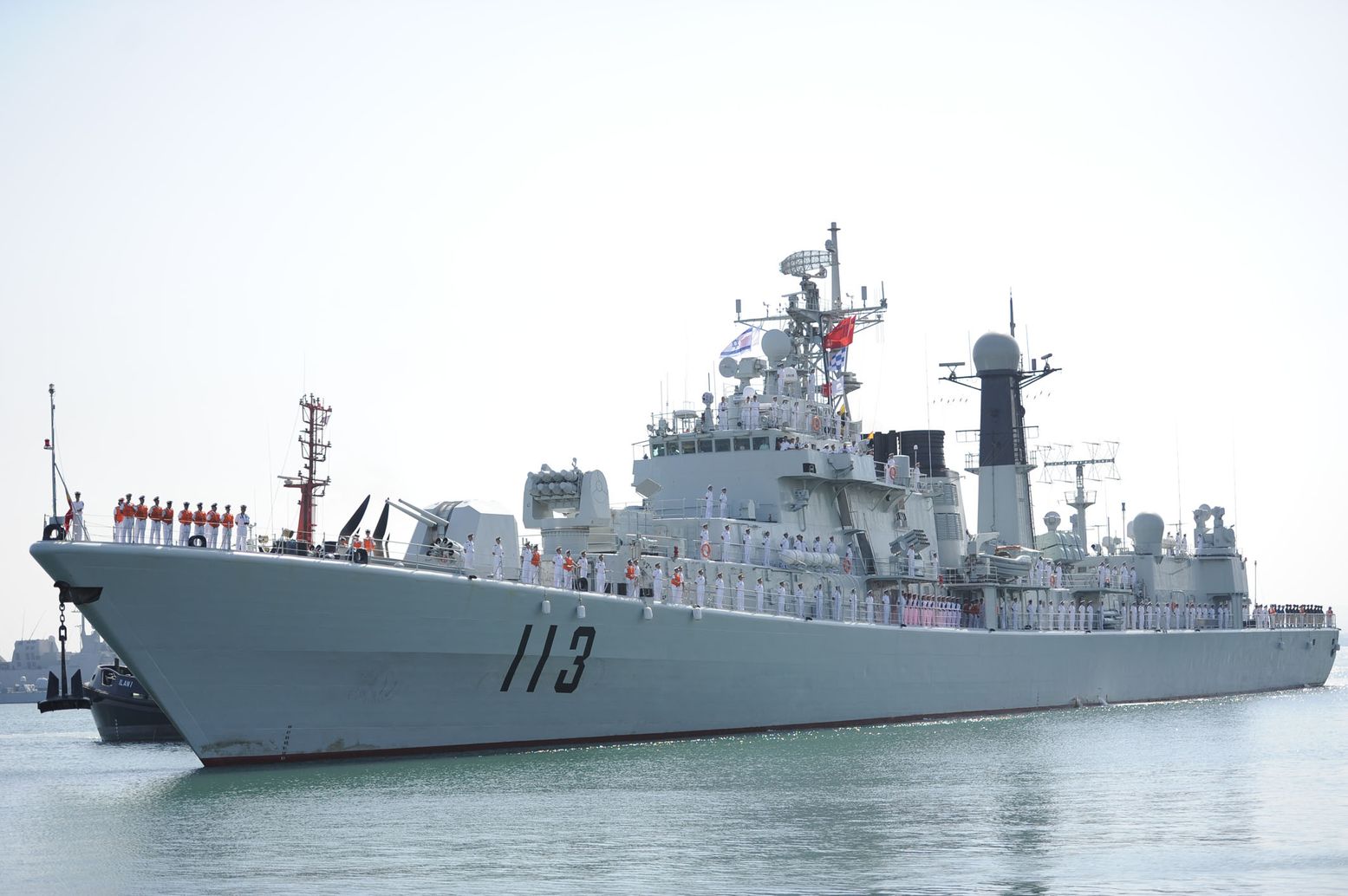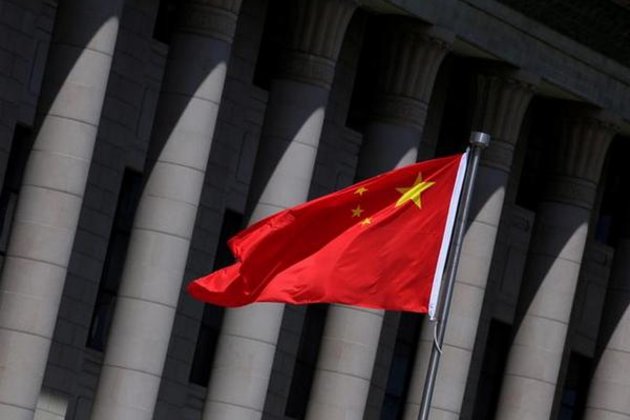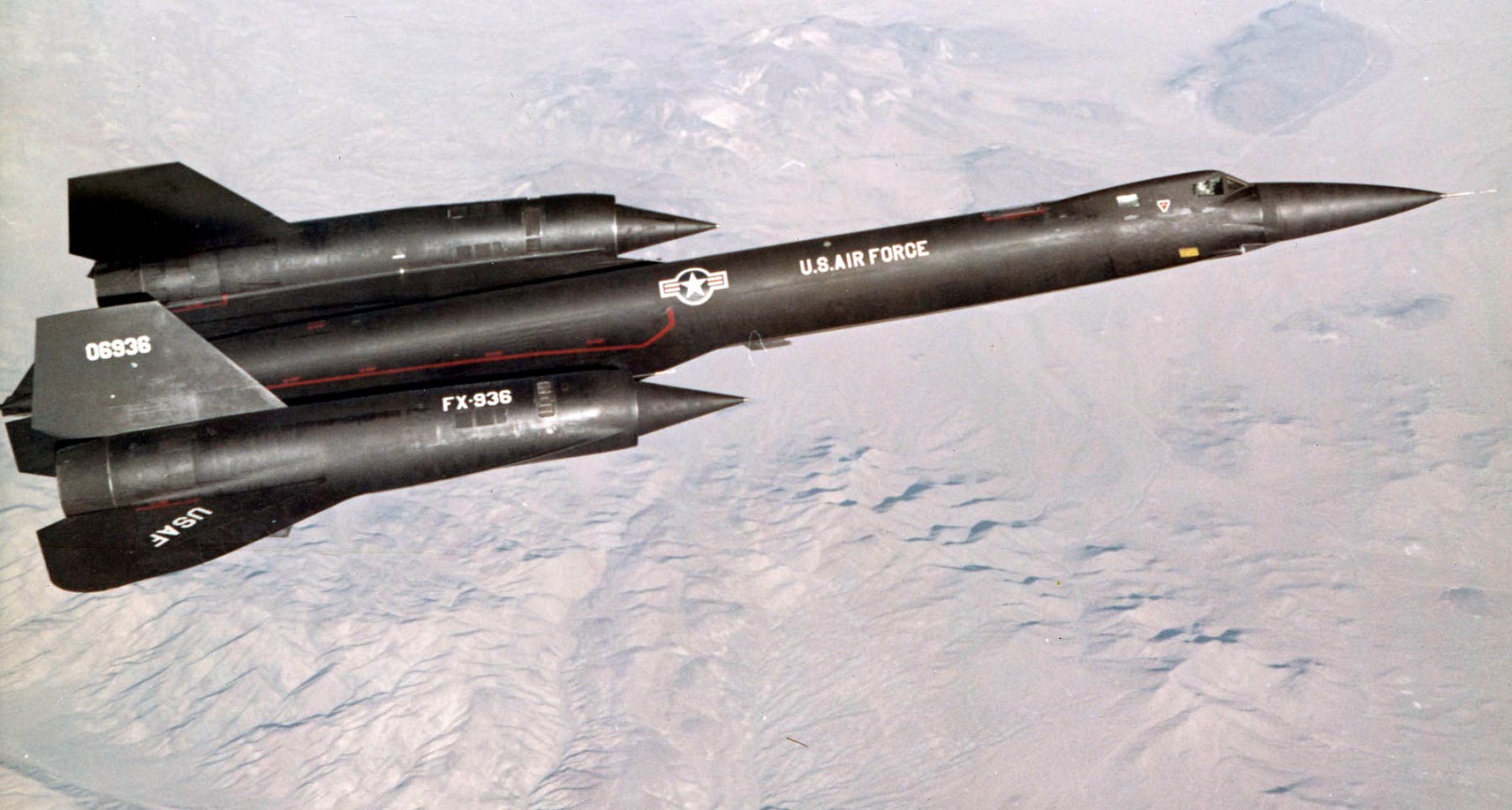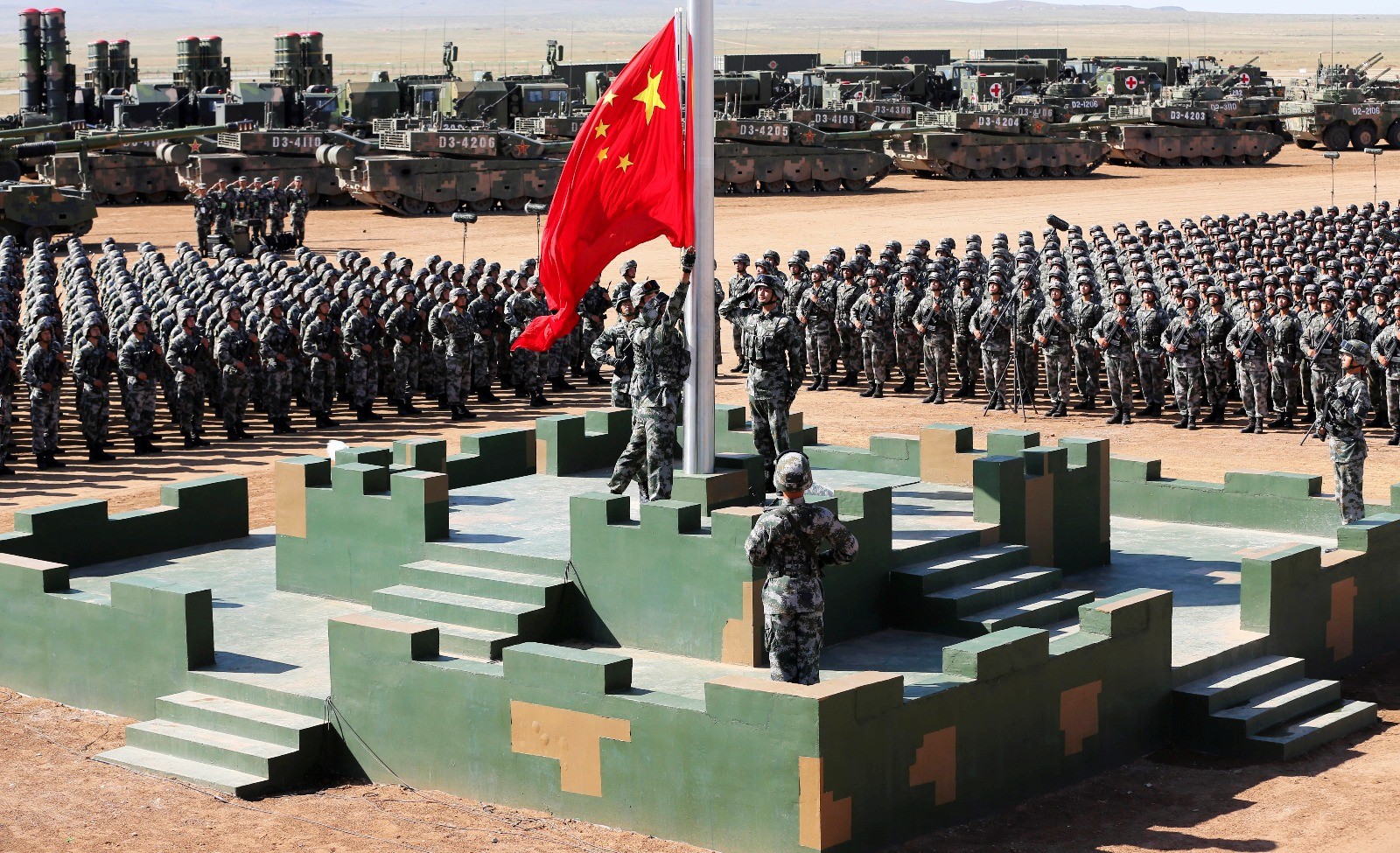Opinion
This Simulated War Game Shows How China Would Win in the South China Sea

Our scenario takes place in the South China Sea at a cluster of reefs and rocks called the Scarborough Shoal, roughly 137 miles west of the Philippines. In real life, China and The Philippines both claim the shoal as part of their territory, and tensions between the two nations have been growing.
The year is 2016, and two of the U.S. Navy’s latest ships are backing a key ally in the tinderbox of the South China Sea. They’re facing down the Chinese navy halfway across the world with the latest weapons and systems the United States can get its hands on. But is it enough?For more than a hundred years, the U.S. Navy has been using naval wargames to test ships, tactics and strategy. Today, thanks to the ability of computers to process massive amounts of data, sharply accurate, procedural “hard” simulations are possible.
One such sim is Command: Modern Naval/Air Operations, a new game that attempts to model modern sea and air warfare as closely as a game for civilians can.
Recommended: The Real Reason China Has Built a Massive Military
Command is particularly suited for attempting a high-fidelity simulation of modern naval combat — it included an admiral and staff from the U.S. Naval War College in the game’s beta testing — and we’re going to take a page from the Navy and put America’s latest fighting ship to the test.
(This first appeared in June 2019.)
The result isn’t good — and a harrowing lesson to be cautious about how we equip the U.S. military.
Recommended: North Korea has Thousands of Tons of Chemical Weapons
The post 9/11 ship
Today, we’re sending the Littoral Combat Ship into the fray — a new class of warships developed following the 9/11 attacks.
Recommended: Why the Korean War May Have Never Really Ended
The LCS was designed to fight close to shore, a characteristic that opens the vessel up to more missions — and challenges — than most Navy ships. For one, they have to be both versatile and agile. The vessels are lightly armed, and rely on swappable “mission modules” to increase firepower and other special capabilities such as surface warfare, minesweeping and anti-submarine warfare.
A normal LCS has a rapid-fire 57-millimeter gun, a pair of 30-millimeter cannons and heavy machine guns. The ship also has Rolling Airframe anti-aircraft missiles to defend against enemy jets and incoming missiles.
But compared to larger surface ships, the LCS lacks firepower — something critics of the LCS have seized upon. These critics contend the LCS should have a larger gun, longer-range self-defense missiles, and anti-ship missiles capable of taking on enemy vessels its own size.
Game on:
Our scenario takes place in the South China Sea at a cluster of reefs and rocks called the Scarborough Shoal, roughly 137 miles west of the Philippines. In real life, China and The Philippines both claim the shoal as part of their territory, and tensions between the two nations have been growing.
In 2012, this dispute almost came to blows when the Philippine navy dispatched the ex-U.S. Coast Guard cutter BRP Gregorio del Pilar to inspect Chinese fishing boats near the shoal. Gregorio del Pilar was forced to withdraw when confronted by two ships of the Chinese coast guard.
In our simulation, it’s 2016 and both nations have continued to press their claims. Two ships of the Philippine navy, the patrol craft BRP Emilio Jacinto and BRP Artemio Ricarde, have arrived.
The potential for a shooting war is very high.
Note — we’re not using this scenario to make a statement about the ambitions of Beijing and Manila, or what we think will happen in the real-life Scarborough Shoal. The scenario just makes a good backdrop for our test of systems on the Littoral Combat Ship.

The U.S. Navy is backing up its Philippine allies — two LCSs, USS Freedom and USS Fort Worth, are both about 30 miles south of the Emilio Jacinto and Artemio Ricarde. The USS Halsey, an Arleigh Burke-class guided missile destroyer, is behind them at an equal distance.
Shots Fired:
The ships of the Philippine navy have comparatively crude sensors — basically amounting to eyeballs and navigational radars — and are having a difficult time identifying all of the ship traffic in and around the shoal. There are a lot of surface contacts. Some are fishing boats, and some may be … something else.
If Emilio Jacinto and Artemio Ricarde really knew what was out there, they’d turn tail and run.
I’m playing the forces of both the U.S. and The Philippines, and fortunately I have an MQ-4C Triton in the area — the naval version of the Air Force’s Global Hawk drone. I send the Triton over the shoal to get an idea of what’s down there.
The Triton identifies plenty of Chinese fishing boats, but also a wolf in the fold — a Chinese Jianghu-class destroyer named the Changde. Twenty miles to the west is the Qinzhou, a new Type 056 corvette.
Changde heads directly toward Emilio Jacinto. Uh-oh.
(This first appeared several years ago.)
At 09:46:31, Changde opens fire on the Emilio Jacinto with her 100-millimeter deck gun. Emilio Jacinto immediately returns fire with her 76-millimeter gun and scores a lucky hit, starting a minor fire on Changde. A gunfight rages for more than three minutes, during which time Changde is struck several times.
Emilio Jacinto reports she is under missile attack from the west. That would make the attacker the corvette Qinzhou. Without air defense radars and advanced weapons, Emilio Jacinto is a sitting duck. Seconds later, she is hit by several Chinese YJ-83 “Eagle Strike” anti-ship missiles, screaming in less than 30 feet above the ocean.
Emilio Jacinto disappears from the command screen.
Another brace of YJ-83s streaks towards BRP Artemio Ricarde. Despite the roughly 60-mile distance, Halsey attempts to intervene, launching SM-6 surface to air missiles to knock down the Chinese missiles. But the distance is too much and Artemio Ricarde is struck. The damage is catastrophic.
Freedom and Fort Worth are steaming north at flank speed. I am ordering them to engage Qinzhou and the wounded Changde, now fleeing north away from the battle zone.
It’s a gamble because Littoral Combat Ships are not well-protected against anti-ship missiles, having only their 57-millimeter guns and Rolling Airframe missile launcher mounts. I believe Qinzhou is out of anti-ship missiles.Changde might still have all of her missiles, but she’s also taken serious damage trading shots with Emilio Jacinto.
Moving at more than 40 knots, Fort Worth and Freedom begin closing the gap.Qinzhou and Changde both turn to face Fort Worth. Apparently they want to fight. I’ll oblige them. Both LCSs are under orders to engage the enemy as soon as they come close enough to fire their Griffin surface-to-surface missiles. Between the two of them, they have 30 Griffins.
At four miles, Fort Worth opens up on Qinzhou with her 57-millimeter gun.Qinzhou immediately returns fire with her 76-millimeter gun, lightly damaging Fort Worth. Unfortunately, Fort Worth’s Rolling Airframe missile launcher is destroyed early on, meaning she is out of active anti-missile defenses.
Then the Griffin missile launcher is put out of action, meaning Fort Worth’s sole armament is a single 57-millimeter gun. Within moments, that too is destroyed.
Fort Worth is hurt, with a bad fire and severe flooding. She’s defenseless at this range. It’s time to leave. Fort Worth turns to race south at maximum speed, but it continues to be pummeled by Qinzhou’s 76-millimeter gun. Laser rangefinders, gun directing radar, 30-millimeter Bushmaster guns all knocked out … the damage reports keep coming in.
Fort Worth is doomed.
As if that weren’t bad enough, Halsey detects two anti-ship missiles launched to the south, halfway between her and Fort Worth and right in the vicinity of the Scarborough Shoal. Could they be from a submarine?
Whatever they are, they’re moving at 520 knots. The two mystery missiles streak north, towards Fort Worth. Not good. Halsey again tries to intervene, launching a salvo of four SM-6 air defense missiles that within moments are traveling at 2,400 knots. Will they reach the threats in time?
Suddenly, it no longer matters. Fort Worth capsizes.
Last Man Standing:
The only thing left for Freedom to do is attack. Freedom has the only anti-ship missiles within a thousand miles. Halsey has none except for a MH-60R Seahawk helicopter armed with Hellfire air-to-surface missiles, but I’m afraid of losing it to Qinzhou’s air defenses. If Freedom wants out, she has to fight her way out.
Opinion
Military rituals and military culture in China

Military culture influences military thinking and military strategy. Today, the armed forces of the major powers have the goal of defending their national interests and contributing to world peace.
(more…)Opinion
Forget the SR-71 Spy Plane: Meet the CIA’s A-12 (Was It Even Better?)

Key point: Both spy planes played key roles in the Cold War.
Analysis of Week’s photos located the USS Pueblo near Wonsan anchored next to two patrol boats—and also revealed that Pyongyang had not mobilized its troops for war. This led Johnson to rule out plans for a preemptive or punitive strike in favor of diplomatic measures which eventually saw the ship’s abused crew released nearly a year later.
On October 30, 1967, a CIA spy-plane soared eighty-four thousand feet over Hanoi in northern Vietnam, traveling faster than a rifle bullet at over three times the speed of sound. A high-resolution camera in the angular black jet’s belly recorded over a mile of film footage of the terrain below—including the over 190 Soviet-built S-75 surface-to-air missiles sites.
The aircraft was an A-12 “Oxcart,” a smaller, faster single-seat precursor variant of the Air Force’s legendary SR-71 Blackbird spy plane.
The jet’s driver, Dennis Sullivan had earlier flown one hundred combat missions in an F-80 Starfighter over Korea for the U.S. Air Force. But Sullivan was technically no longer a military pilot—he had been “sheep-dipped,” temporarily decommissioned to fly the hi-tech jet on behalf of the CIA. He now sat in the cramped cockpit in a refrigerated space suit, as the friction generated by his plane’s Mach 3 speeds heated the cockpit to over five hundred degrees Fahrenheit.
Sullivan noted warnings light up on his instrument panel as Vietnamese Fan Song radars locked onto him. But they did not launch missiles. In twelve-and-a-half minutes he completed his run and looped around over Thailand, where he received aerial refueling. Then he embarked on a second pass.
But the North Vietnamese were waiting for him. A missile launch notification warned him that a 10.5-meter-long missile was heading towards him.
Decades later, Sullivan described in a speech seeing one of the missiles streak just past him, two-hundred meters away.
“Here comes a big’ol telephone sailing right by the cockpit—going straight up. That’s interesting . . . So I continued down the route, and didn’t see anything—until I got down the road, and then I could see behind me in the rear-view periscope at least four missile contrails, all spread out. Those four contrails went up about 90-95,000 feet and all turned over, bunched up in a line, headed for my tail end.”
The A-12 officially had a maximum speed of Mach 3.2—but the missiles that were following Sullivan could attain Mach 3.5.
“I said, ‘Holy smokes—those things fly pretty good up there for something which doesn’t have much in the way of wings.’ So I watched them come.… They’d get up right behind me, very close, and all of the sudden there’d be a big red fireball—a big white cloud of smoke—and you’d immediately pull away from it. You were going thirty miles a minute. [Note: actually, 41 miles per minute!] Every one of those SAMs guided absolutely perfectly and did the same darn thing.”
The missile’s 440-pound proximity-fused warhead was designed to swat planes out of the sky within 65 meters of the point of detonation. However, in the thinner air of the upper atmosphere, its fragments could travel up to four times as far.
Sullivan escaped and landed his A-12 in Kadena Air Base, where it spent several minutes cooling on the tarmac before mechanics could even touch its friction-heated skin. The stress of the heat and high speeds exacted a steep physical toll on the jet’s pilots, who lost an average of five pounds of body weight on the completion of their three to four- hour missions.
He was sitting for debriefing when mechanics burst in the room to show him two metal fragments from a missile’s nose cone they had found buried under his low left wing—just shy of his jet’s fuel tank.
Later when, Sullivan’s camera footage was found to have captured the ghostly white contrails of six surface-to-air missiles surging towards him from the ground.
Operation Black Shield
The CIA’s twelve ultra-fast A-12 jets were doomed to a brief operational career after the first flight in 1962. Following on the heels of several U-2 spy plane shootdowns, Washington was no longer willing to authorize overflights of Soviet territory which the A-12 had been designed to perform. Meanwhile, the Air Force ordered a larger SR-71 variant of the A-12 that was deemed superior in a “fly off” in November 1967. Unwilling to fund both highly similar aircraft, the CIA’s A-12 fleet was promptly scheduled for retirement.
However for ten months, the A-12 briefly filled a vital niche providing rapid high-value photo intelligence over Asia, where the political and military risks were deemed acceptable. Between May 31, 1967, and March 8, 1968, CIA drivers flew A-12 on twenty-nine spy missions over Cambodia, North Korea and Vietnam in an operation codenamed Black Shield. The jets flew out of Kadena Airbase in Okinawa, Japan, supported by over 250 support personnel.
Initially, President Lyndon B. Johnson was concerned by reports that North Vietnam had obtained Surface-to-Surface (SSM) missiles for attacks on South Vietnam. On May 31, 1967, CIA driver Mele Vojvodich took of in a rainstorm and recorded a mile-long reel of camera footage covering most of Northern Vietnam. The reel was then air-transported for development by Kodak in Rochester, NY. The verdict, confirmed by subsequent overflights, was that Hanoi had no SSMs after all.
A-12 intelligence often directly influenced LBJ’s decisions to commit to air raids during the Vietnam War. However, the Oxcart’s stealth features never proved adequate to avoid detection by Soviet-built radars.
On October 28, 1967, an S-75 launched a missile at an A-12 flown by Miller, but did not come particularly close. However, after Miller’s close call two days later on October 30, the Black Shield flights were temporarily suspended. A later January 4 mission on the same route over Hanoi also elicited a missile launch, to no effect.
Meanwhile, on January 23, 1968, North Korean patrol boats seized the USS Pueblo, an American spy ship operating in international waters, taking her crew into captivity. Worrying the incident, combined with a failed commando raid on the South Korean presidential palace, might herald a second Korean War, Johnson was persuaded to dispatch an A-12 flown by Jack Weeks over North Korea on January 26.
Analysis of Week’s photos located the USS Pueblo near Wonsan anchored next to two patrol boats—and also revealed that Pyongyang had not mobilized its troops for war. This led Johnson to rule out plans for a preemptive or punitive strike in favor of diplomatic measures which eventually saw the ship’s abused crew released nearly a year later.
A-12s flew two additional missions over North Korea to keep tabs on the ship, which was eventually moved to Pyongyang. Tragically, Weeks died a half-year later on June 5 when a malfunction in his A-12’s starboard turbojet engine caused its to overheat, breaking his plane apart over the South China Sea. Sixteen days later, a CIA A-12 made its last flight before the type was retired from service.
Sullivan’s close brush over Vietnam suggests its fortunate no A-12 overflights were authorized over the Soviet Union, where they would have been exposed to even greater peril, from high-speed interceptors and more advanced SAMs like the S-200 (SA-5). Today, such high-risk photo intelligence is largely acquired by satellite, or by expendable drones.
Sébastien Roblin holds a master’s degree in conflict resolution from Georgetown University and served as a university instructor for the Peace Corps in China. He has also worked in education, editing, and refugee resettlement in France and the United States. He currently writes on security and military history for War Is Boring. (This first appeared in June 2019.)
Image: DVIDShub.
Opinion
SUN: China’s Military Deserves America’s Respect, But Not Its Fear

Key point: China’s military is advancing rapidly, but it is still plagued by corruption and discipline problems.
China’s new defense white paper has been eagerly awaited by Western analysts searching for clues to Beijing’s national security strategy.
The 2019 white paper (the last one was in 2015) lays out general principles of China’s defense policy. It avows the new face of the People’s Liberation Army (PLA). Cyberwarfare, more flexible command and control, long-range naval operations. Change the names and numbers, and you could be forgiven for thinking this was a planning document from the U.S. military or an American thinktank.
But before we fear the onslaught of the Dragon, take a look at the problems that the white paper says China’s military must solve.
The most glaring is corruption, which has led to numerous senior officers being punished for crimes such as selling promotions. “China’s armed forces are tightening political discipline and rules, investigating and dealing strictly with grave violations of CPC discipline and state laws,” the white paper says. “China’s armed forces punish corruption in strict accordance with CPC [Communist Party] discipline and relevant laws, and rectify any malpractice in key construction projects and the procurement of equipment and material…They have worked to implement full-spectrum audit, intensify the audit of major fields, projects and funds, and perform strict audits over the economic liabilities of officers in positions of leadership. Active efforts have been made to monitor the cost-effectiveness of applied funds, conduct whole-process audit, and combine civil and military efforts in auditing.”
The U.S. military has no shortage of faults. Careerism, inflated prices for military equipment, weapons that don’t work as advertised, the revolving door between the Pentagon and the defense industry. Nonetheless, it is hard to imagine the Pentagon having to cite corruption as a major impediment to military efficiency.
The U.S. military also has its share of discipline problems, such as Alcohol abuse, and sexual harassment that has derailed the careers of several senior officers. But these pale compared to the discipline problems that worry the Chinese military:
“China’s armed forces are building a military legal system with Chinese characteristics and pressing ahead with a fundamental transformation in how the military is run…They are promoting legal awareness through public communication and education campaigns, establishing and improving the support mechanism of legal consultation and service, and advancing law-based management in the military. China’s armed forces are striving to manage the troops more strictly in all respects. They have fully implemented military rules and regulations, restored and improved the traditional mechanism of using bugles to communicate and command, carried out safety inspections to identify and tackle potential problems, stepped up garrison military policing, strengthened the management of military vehicles by targeted measures, and set up a mechanism of regular notification on garrison military policing.”
There was nothing truly surprising in the white paper. It’s no secret that China has been moving away from a huge, low-tech peasant military to a smaller, more agile and high-tech force. Still, there is plenty in the paper to disturb the West as well as China’s Asian neighbors. China will continue to replace older aircraft and ships with more advanced models. It is setting its eyes on distant horizons: the PLA will “address deficiencies in overseas operations and support, builds far seas forces, develops overseas logistical facilities, and enhances capabilities in accomplishing diversified military tasks.”
And the Chinese military still has its eyes on Taiwan. “China has the firm resolve and the ability to safeguard national sovereignty and territorial integrity, and will never allow the secession of any part of its territory by anyone, any organization or any political party by any means at any time,” the white paper says. “We make no promise to renounce the use of force, and reserve the option of taking all necessary measures. This is by no means targeted at our compatriots in Taiwan, but at the interference of external forces and the very small number of “Taiwan independence” separatists and their activities. The PLA will resolutely defeat anyone attempting to separate Taiwan from China and safeguard national unity at all costs.”
Nonetheless, behind the curtain of hypersonic missiles and stealth fighters, is a military that worries about corruption and discipline. The Chinese military is to be respected, but not to be feared.
Michael Peck is a contributing writer for the National Interest. He can be found on Twitter and Facebook. (his article was originally published last month and is being republished due to reader interest.
Image: Reuters.






